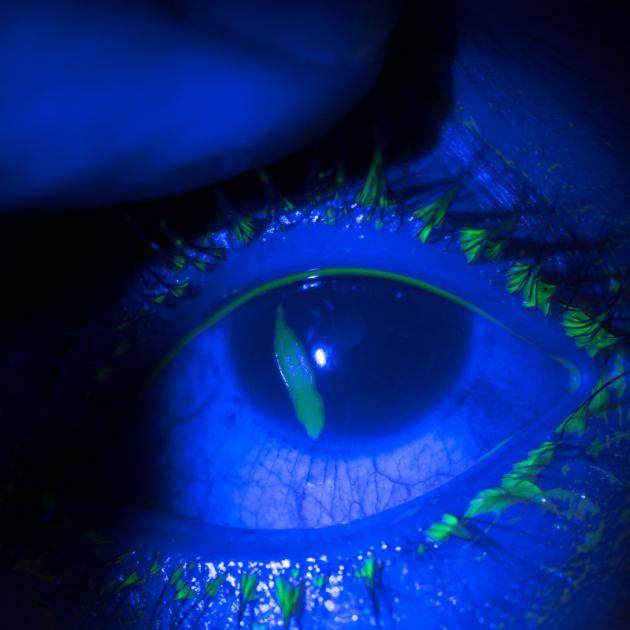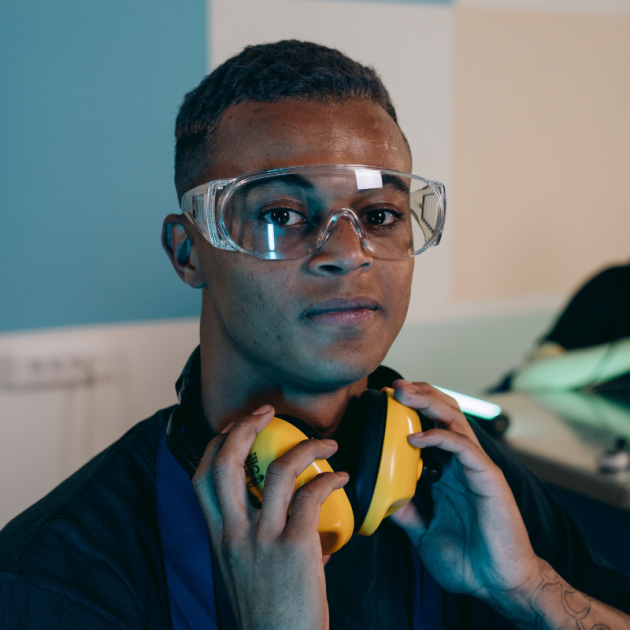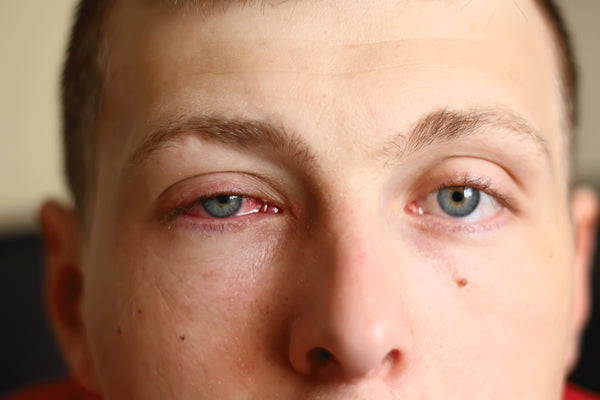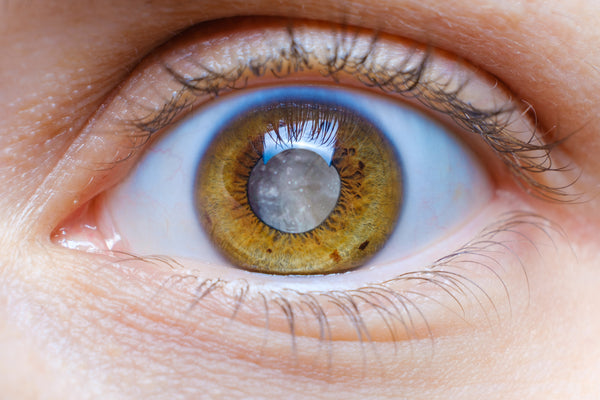
A corneal abrasion, also known as Scratched Eye, happens when the clear window at the front of your eye becomes scratched. It is one of the most common types of eye injuries and they generally happen as a result of trauma to the cornea such as a scratch with a fingernail, walking into something, or getting grit in your eye. Inserting and removing contact lenses can also sometimes cause a corneal abrasion. This condition is extremely painful.
Symptoms
Symptoms of a scratched eye include:
- Eye pain, especially when opening or closing
- Teary or watery eyes
- Blurred vision
- Red eyes
- Feeling like you have sand or grit in your eye
- Sensitivity to light
Causes
There are many ways you can get a scratched eye – anything that touches the surface of your eye can cause an injury. Your cornea could be scratched by a hairbrush, a fingernail, or tree branch. Or it could be scratched by debris like dust in your eye or if a small foreign body becomes lodged under your eyelid.

The most common causes of a corneal abrasion include:
- Sand, dust, or pieces of plant in your eye.
- Small pieces of wood or metal – particularly if you work with heavy machinery.
- Makeup, brushes, or applicators.
- Your fingernails.
- Misuse of contact lenses
Risk factors
Some risk factors will mean you are more prone to corneal abrasions than others. These can include situations relating to your occupation or hobbies, or involve other existing conditions.
Risk factors for corneal abrasions include:
- Working near heavy machinery such as saw mills, grinding, or sanding machines.
- Landscaping without safety goggles.
- Grilling or BBQing without safety goggles.
- Participating in sports or activities that might cause eye injuries.
- Wearing contact lenses.
- Having dry eyes.
- Rubbing your eyes repeatedly or rubbing them with too much force.
Diagnosis
Your optometrist will be able to diagnose a corneal abrasion by performing an emergency eye care exam. This will include a slit lamp test that will allow them to see all of your eye and they may look underneath your eyelids if they suspect you have something lodged beneath them.
They may also give you eye drops that contain a yellow dye, called fluorescein, which settles in any abrasions on the surface of your eye and highlights damaged areas.
Treatment
The majority of the time, while a corneal abrasion is painful, they will heal themselves between a few days and 3 months. But you may be prescribed some antibiotics, eye drops, or ointment to help heal the abrasion and treat any related symptoms. Ongoing lubricating drops may be recommended if the scratch is more severe to prevent the delicate new tissues from being removed as they grow – a condition called recurrent erosion.
Because of the discomfort, you may be tempted to tape or patch your eye closed but you should avoid doing this while your eye heals and leave it uncovered.
In the case of metal filings in the eye, extra care needs to be taken to ensure none remains in the eye which can result in permanent scarring.
Prevention

Despite being a common issue, corneal abrasion is very easily prevented. Take safety precautions when working with machinery like grinders or sawmills – make sure the guards are in place and wear eye protection. Additionally, always wear eye protection if you’re working in a dusty environment or with vegetation to prevent debris from getting in your eye. And never touch your eyes after working with dusty, gritty, sandy, or dirty things.
If you get something in your eye:
- Avoid rubbing it to prevent further damage
- Blink several times to try and clear it
- If it persists, use saline solution or a specially designed eye bath to rinse your eye – do not use regular tap water to rinse your eye as it is not sterile
If these things don’t help, see your optometrist as soon as possible.
- If you get something in your eye, avoid making the injury worse:
- Don't try to remove an object that is embedded in your eye or makes your eye difficult to close.
- Don't rub your eye after an injury.
- Don't touch your eye with cotton swabs, tweezers or other instruments.
- If you use contact lenses, don't wear them while your eye is healing.
Takeaway
Corneal abrasions, also known as scratched eye, are some of the most common eye injuries. They are very painful but are easily preventable with the right precautions. Your optometrist can diagnose a corneal abrasion and they usually clear up on their own, but more severe cases may need to be treated using eye drops, ointments, or antibiotics.







